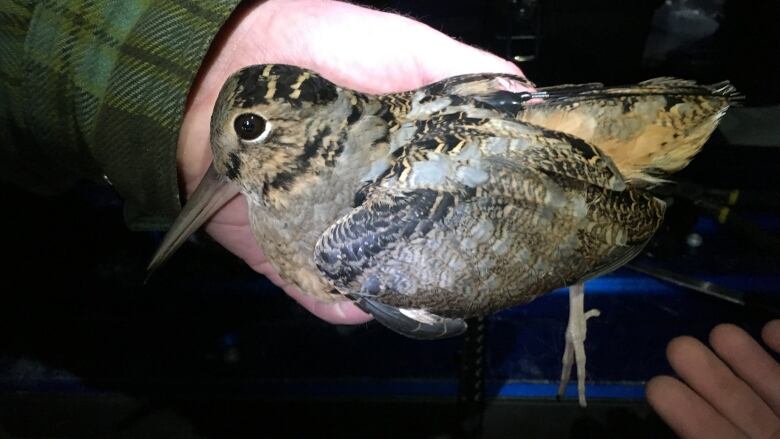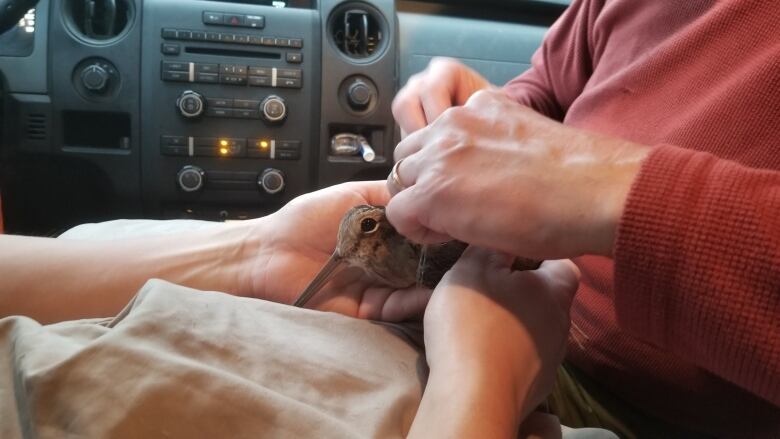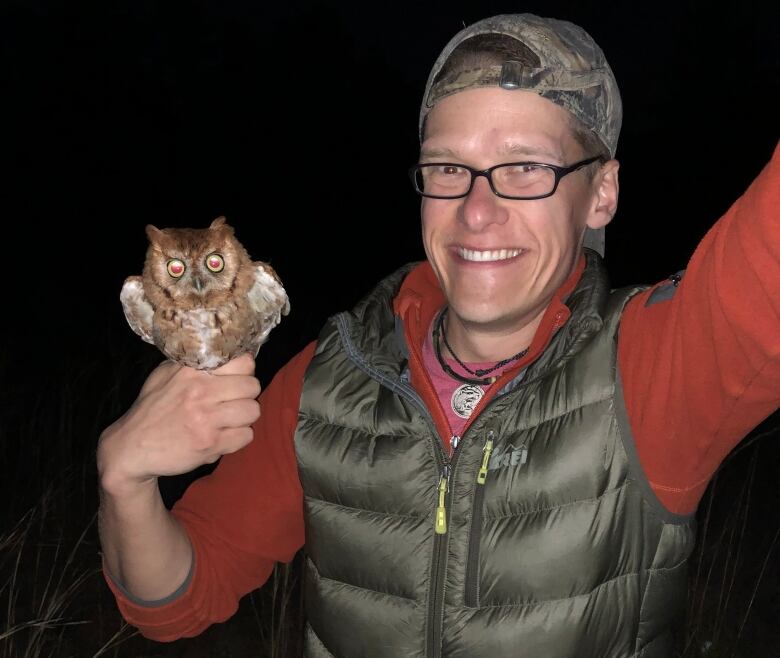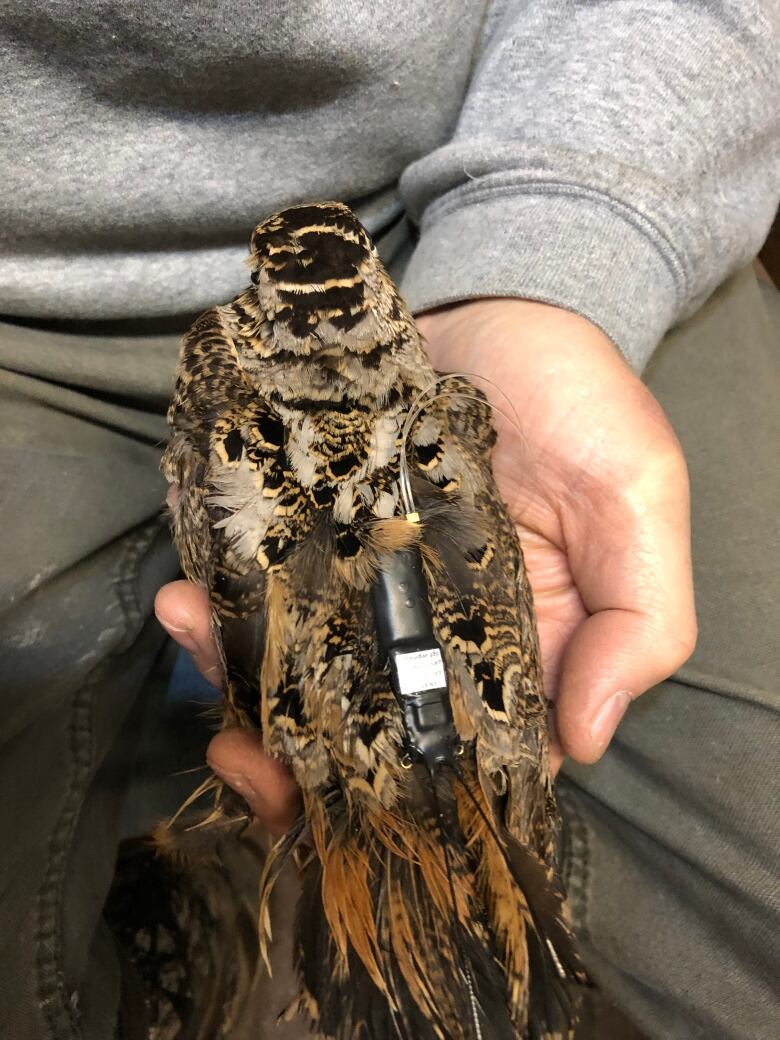Tracking a secretive bird: Researchers join woodcock migration study
Researchers placed GPS tracking devices on 'local' woodcock as part of an international study

A New Brunswick-based biologist hopes involvement in an international migration study can shed light on one of the province's most elusive game birds.
Bruce Pollard calls the American woodcock a "secretive bird" and thinks we have lots to learn about its behaviour.
Pollard works for the Canadian Wildlife Service in Sackville. Earlier this month, he joined a researcher from Maine to catch woodcock on the Canadian side of the border and equip the birds withGPS transmitters.
It's no easy task. Woodcocks spend most of their time on the ground and prefer fields and young growth forest. About the size of a robin, they use a long beak to hunt their primary prey: earthworms.

They are immaculately camouflaged in brown, tan, black and orange and are difficult to see on the forest floor.
So the researchers have to catch them when they're airborne. Biologist Alexander Fish of the University of Maine said that's done using a mist net.
"So these are kind of fine nets likea hairnet," said Fish.
"We basically string up these nets. They sit about two metres tall and then they can run about, you know, 12 metres long," he said. "And we hope to catch birds as they fly around during that crepuscular flight."

"That's kind of pre-dawn and post-sunset. There's about a five or 10-minute period where birds move from diurnal to nocturnal roost sites."
The key is to get those nets up in a place where woodcock live. Fish said that's where local scientists like Bruce Pollard come in.They have the contacts to find good locations.
"When we were in Nova Scotia there was this small non-profit, the Woodcock Conservation Society, [which]had some sites where they had done some habitat management," Fish said.
"So we targeted those sites for capture just because we knew they'd been working in the area."
Fish said they generally catch one or two woodcock each time they set up the nets. Andit's not unusual to have bycatch. Owls and bats are also sometimes caught.
The woodcock are carefully weighed and measured, sexed and banded and then the small transmitter is put in place.
It sits between the wings, near the bird's tail. Two loops of filament go around its legs to hold it in place.

It's important to match the bird with the proper-sized transmitter.
"We have to stay within four percent body mass," said Fish, "So for males and females, we can put different-sized transmitters."
To ensure the transmitters didn't interfere with flight and movement, the researchers tested it on pigeons caught on campus at the University of Maine, Fish said.
This is the second year for the study, and it has already produced some interesting results.
It seems some woodcock are impressive athletes during migration, and some are more like couch potatoes.

"We're seeing some birds that can go, say, a distance as far as Maine to coastal North Carolina in as little as six days," said University of Maine biologist Erik Blomberg. "And then there's other birds that might take six weeks to make a similar distance."
And Blomberg said the individuality doesn't end there.
"We might catch multiple individuals from the exact same field in the same night," he said. "And one of them will end up spending the winter in, you know, South Carolina, and the bird that was right next to it will end up in Louisiana."
Population in decline
Woodcock numbers have been in slow decline for more than 50 years. Blomberg said it has dropped about one per cent a year over that time.
Bruce Pollard will have to wait a while to see how the woodcock he helped catch in Nova Scotia made out during migration. He's hoping to get transmitters on New Brunswick birds next year and put the data to good use.
"We'll get some data on, you know, what they're doing, what types of habitat they're selecting, how important different types of habitat are to serving their needs," Pollard said.
"And we'll also get some sense of when they make the decision to head south, which will potentially have some influence on how we could manage our harvest regimes and our hunting seasons."
You can see some of the early results of this work by going to www.woodcockmigration.org.













_(720p).jpg)


 OFFICIAL HD MUSIC VIDEO.jpg)
.jpg)



























































































